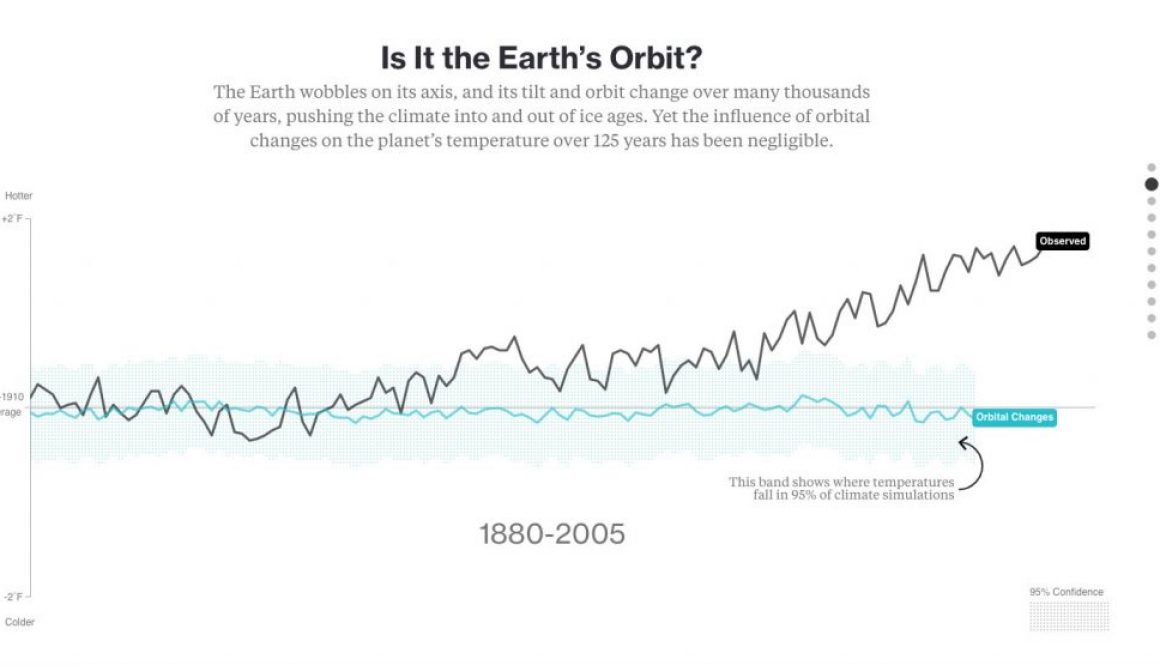This is probably the most common statement you’ll hear from someone who doesn’t believe human activities are changing the climate. It’s much more comfortable to blame something we can’t control, so that we can justify ignoring the problem. But is there any truth to these cycles?
Yes, there is. They’re called Milankovitch Cycles, and they’re named after the geophysicist and astronomer Milutin Milanković.
Milanković developed James Croll’s theory that Earth’s climate changed over long periods (tens of thousands of years) because of the natural variations in the intensity and distribution of solar radiation that reaches the planet, and hence how much warmth we get. This happens for three reasons, so there are in fact three cycles, and they work like this (Fig. 1):
A. Earth wobbles.Technically, this is called ‘axial precession’ and it happens in 23,000 year cycles. depending on which phases the other two cycles that Earth is in, this can either add to cooling or warming.
B. The second cycle is because of Earth’s obliquity that is, the tilt of its axis changes. And this happens over a 41,000-year cycle. Today, as most of the land mass is now in the Northern Hemisphere, when less of that hemisphere is facing the sun in winter, it receives less warmth, so Earth tends to cool slightly.
C. Earth’s orbit around the sun is eccentric, that is, its orbital shape changes in cycles. When Earth is further away from the sun, it receives less solar energy and therefore less warmth, so it tends to get a little cooler. These cycles vary, from 100,000 years to 413,000 years.

When the compound effect of these cycles are taken together, beginning around 9,000 years ago, Earth should slowly have been entering a cooling cycle. But by then, people had developed agriculture, and the idea was spreading across the planet. Fast.
Changing land use from natural to cultivated and breeding methane-gas producing livestock, sent just enough excess greenhouse gasses into the atmosphere to compensate for the very gradual cooling effect of the natural Milankovitch Cycles. So, while greenhouse gasses in the atmosphere were increasing, the climate remained relatively stable (we’ll talk about the so-called mini Ice Age and the Medieval Warm period in the coming days).
And then came the Industrial Revolution. We started burning huge amounts of fossil fuels, which paved the way to a population explosion and with it, the rapid conversion of carbon-absorbing forests and wetlands into carbon-emitting agriculture, causing Earth to warm faster than any time since the comet took out the dinosaurs.
So yes, the cycles are real. But the cooling effects of the current cycles are far too small to compensate for our rapid warming of the planet.

